Al-Assad Airport, Latakia 04 SEPT 2015
September 24, 2015 - John LawrenceSatellite imagery of Latakia's Al-Assad Airport from September 4, 2015 reveals increased construction, possibly in preparation for Russian troops and equipment arrivals.
Satellite imagery of Latakia's Al-Assad Airport from September 4, 2015 reveals increased construction, possibly in preparation for Russian troops and equipment arrivals.
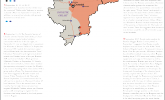
Russia and the separatists continued their operational pause in eastern Ukraine as Russia turned its attention toward its creation of a forward operating base in Syria ahead of President Vladimir Putin’s speech at the UN General Assembly on September 28.
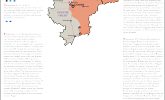
Russia and the separatists continued their operational pause in eastern Ukraine as Russia turned its attention toward its creation of a forward operating base in Syria ahead of President Vladimir Putin’s speech at the UN General Assembly on September 28.
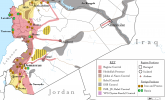
Grand strategic objectives:
• Establish an Islamic Emirate in Syria that is a future component of the envisioned al-Qaeda Caliphate
• Unify the global jihadist movement
Strategic objectives:
• Destroy the Assad regime
• Transform Syrian society from secular nationalism to an Islamic theocracy
• Establish locally-accepted governance as a precursor to an eventual Islamic Emirate
• Build an army to protect the Islamic Emirate by partnering with Syrian rebel groups
• Resolve the fitna, or schism, with ISIS
• Counter U.S. influence in Syria
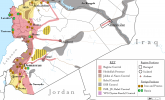
Grand Strategic Objectives:
• [Syrian Regime] Preserve the rule of Syrian President Bashar al-Assad in a post-war Syria encompassing the entire pre-war Syrian state
• [Iran] Preserve a viable Syrian regime led by Syrian President Bashar al-Assad as a key member of the ‘Axis of Resistance’; achieve strategic positioning against Israel
• [Russia] Preserve the Syrian state – not necessarily Syrian President Bashar al-Assad – as a key foothold in the Middle East and an ally against terrorism
• [Hezbollah] Prevent the spread of the Syrian Civil War into Lebanese core terrain
Strategic Objectives:
• [Syrian Regime] Maintain Syrian territorial integrity through an ‘army in all corners’; consolidate Syrian civilian population in regime-held areas; bolster international and domestic legitimacy as ruler of Syria.
• [Iran] Position against Israel in southern Syria along the Golan Heights; preserve access to supply lines from Syria to Hezbollah in Lebanon; develop network of Syrian proxies to maintain Iranian influence if regime falls
• [Iran/Russia] Enable Syrian regime to defend core terrain along Syrian central corridor
• [Hezbollah] Secure Lebanese border region against incursion by militant groups

The trajectory of the Syrian Civil War may fundamentally shift within the 90 day timeframe. Russia escalated its military assistance on behalf of the Syrian regime in early September 2015, deploying armored vehicles and hundreds of personnel to the Syrian Coast in preparation for the establishment of at least one forward air operations base.
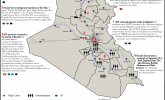
ISF operations to recapture Ramadi remain stalled, but remain the ISF’s main effort.
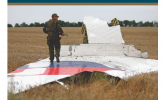
Russia has been using an advanced form of hybrid warfare in Ukraine since early 2014 that relies heavily on an element of information warfare that the Russians call “reflexive control.” Moscow has used this technique skillfully to persuade the U.S. and its European allies to remain largely passive in the face of Russia’s efforts to disrupt and dismantle Ukraine. The West must become alert to the use of reflexive control techniques and find ways to counter them if it is to succeed in an era of hybrid war.
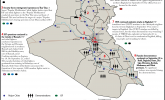
ISF operations to recapture Ramadi remain stalled, but remain the ISF’s main effort.
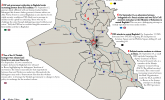
Challenges are mounting against PM Abadi’s government and the ISF in Baghdad. Following the kidnapping of the 18 Turkish workers last week, likely by Iranian-backed Shi'a militias, this week witnessed the kidnapping of a former Sunni advisor from Anbar.